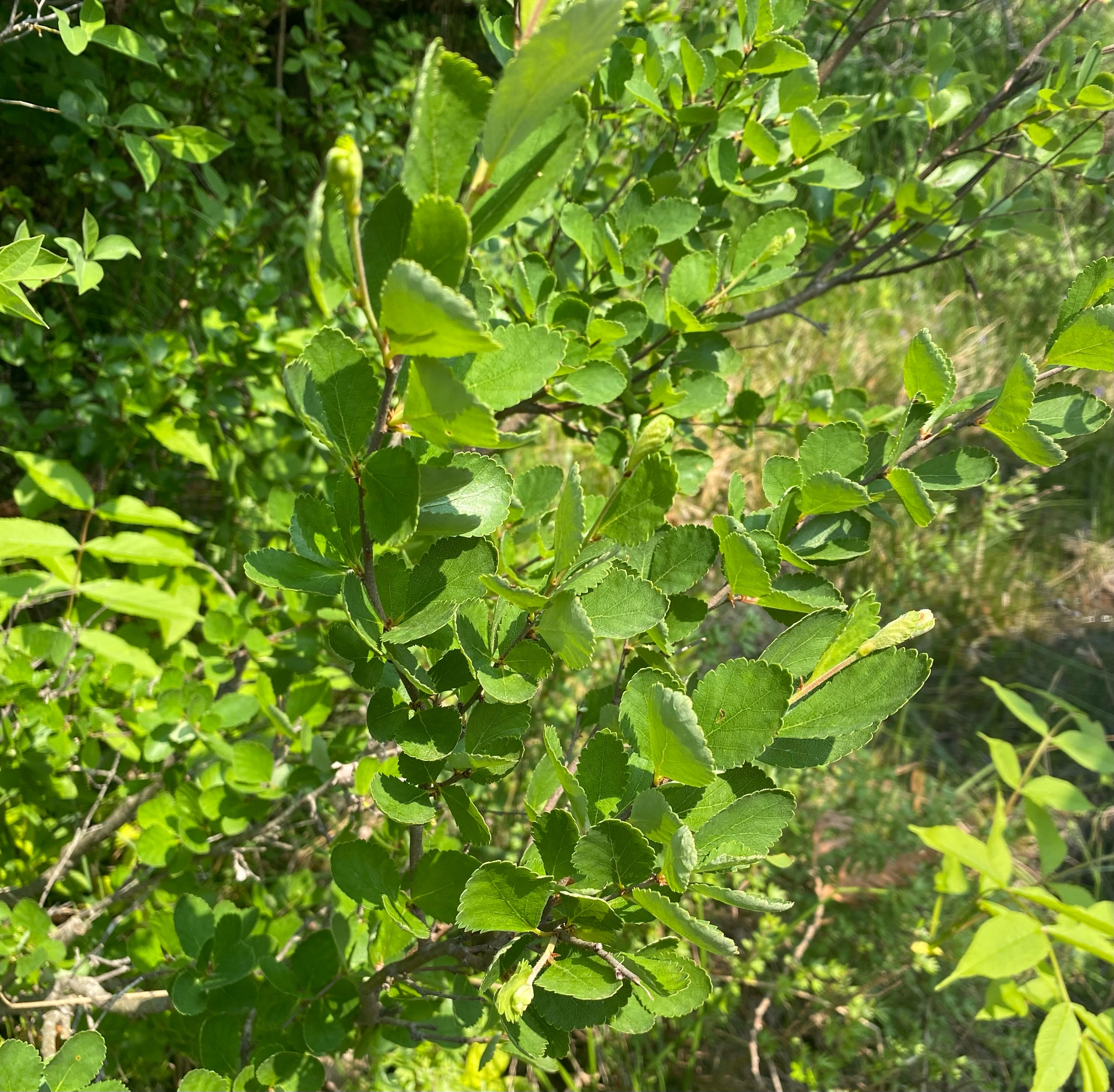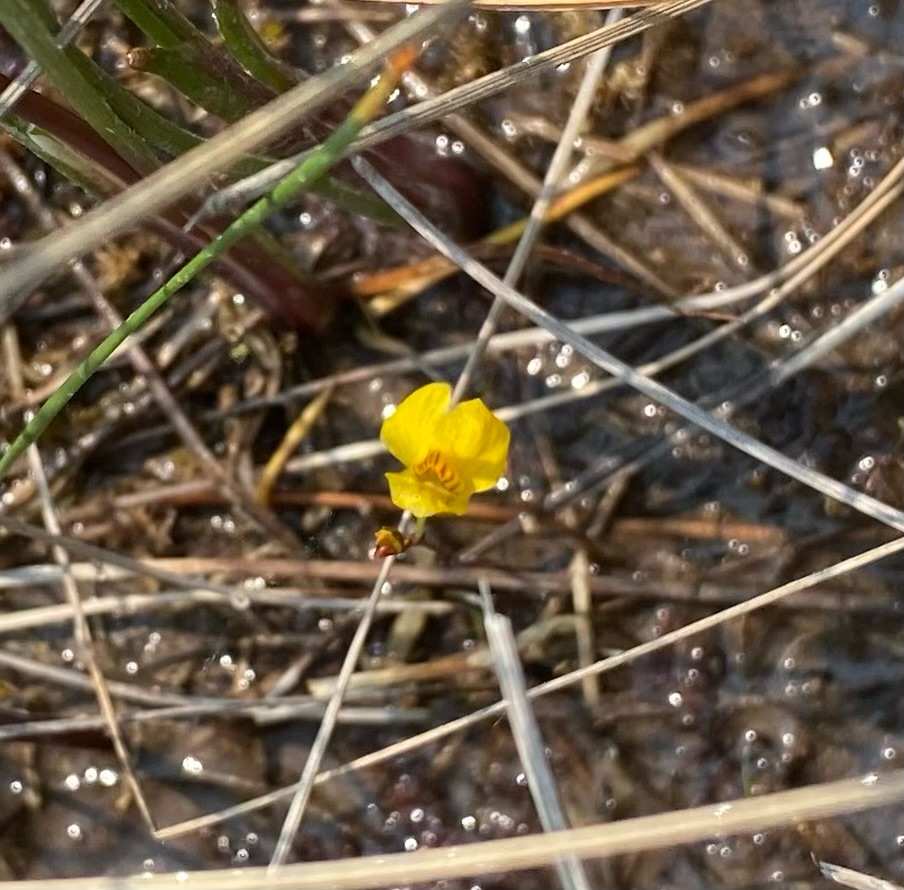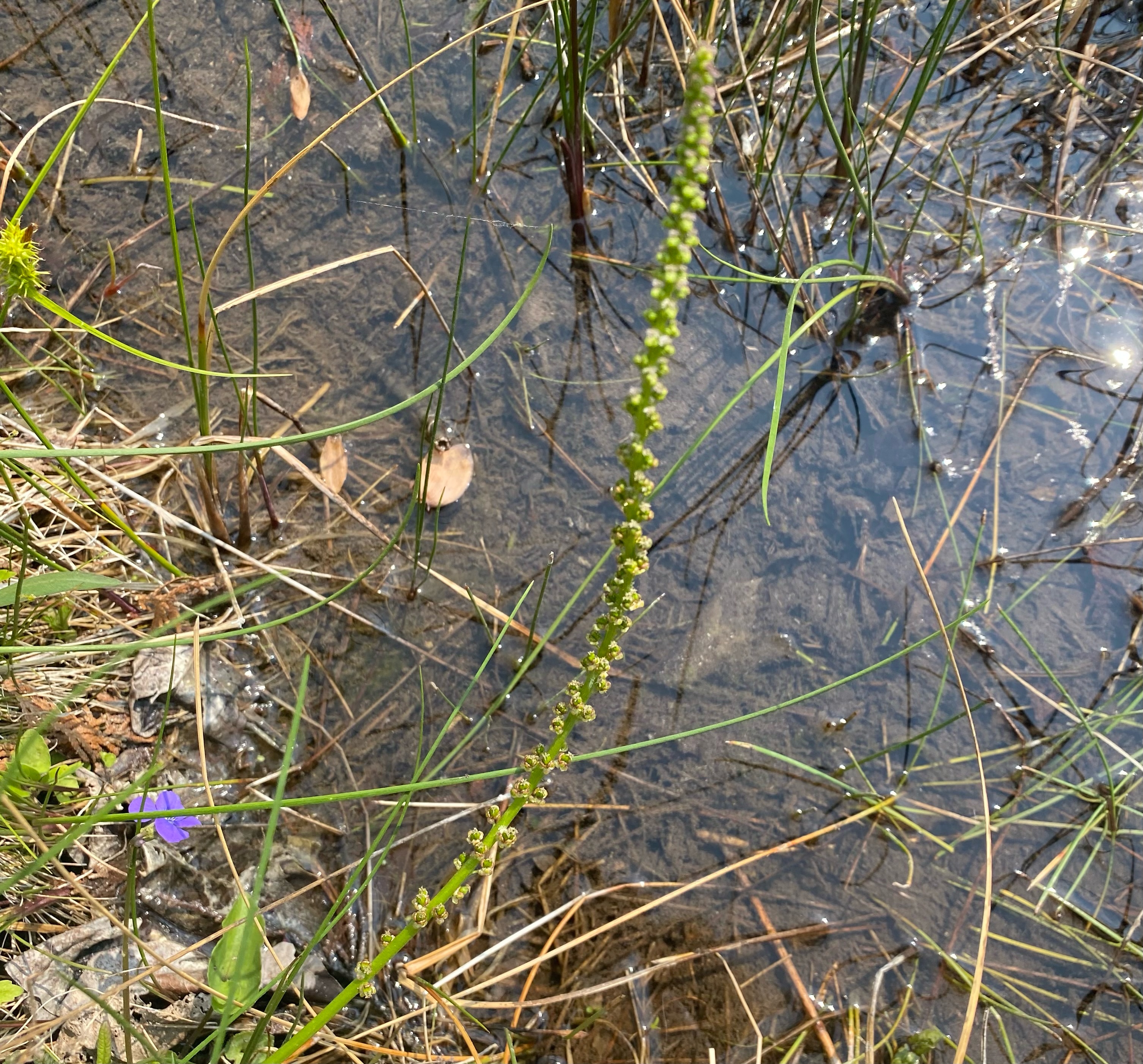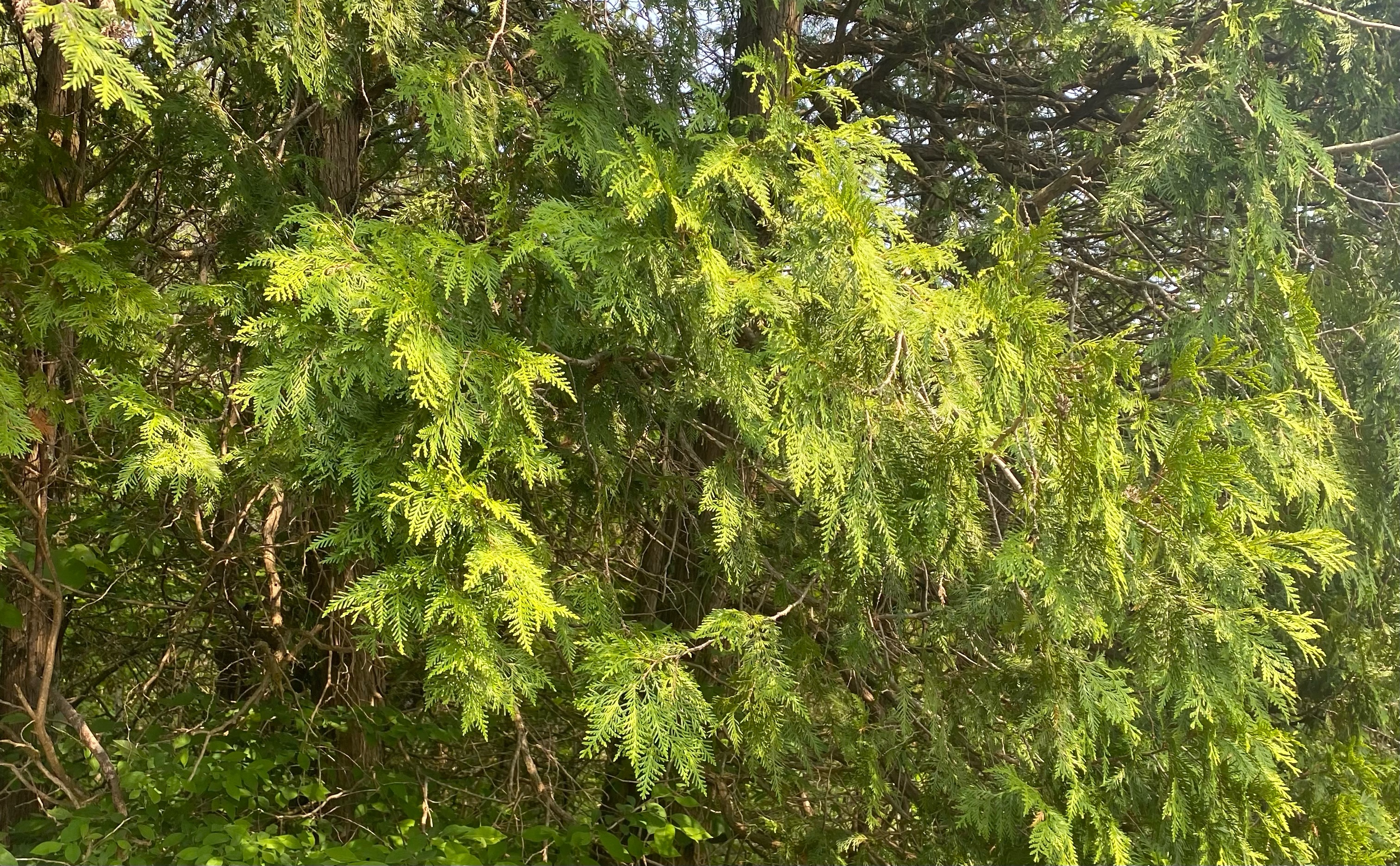Cedar Bogs is a very unique area in Ohio. Its name can also be very misleading as it’s actually considered a fen. This is due to how the water is able to run through it, whereas if it were a bog it would just clog. Water enters the bog from rainwater, water in the soil, and the ancient buried teays river. The water is also clear due to the limestone in the soil altering the alkaline water to a more neutral pH.
This unique landscape was carved out by the glacier that came through Ohio bringing with it lots of Tundra plant seeds. This has also contributed to the immense botany witnessed at this sight.
Two Inflorescence Types
White Baneberry
(Actaea pachypoda)

This Flower is called White Baneberry. It has a raceme inflorescence. You can see the main stalk with lots of little flowers spirally coming off of it.
It has flowers with indistinguishable parts. Its leaves were alternated and divided. Due to its distinct raceme, it is easily distinguishable. When researching this plant, I learned that this plant is extremely toxic to mammals. It causes cardiac arrest in them. white-baneberry.
Jack-in-the-pulipt
(Arisaema triphyllum)

Jack-in-the-pulpit is my favorite flower that I learned about this year. From its exciting shape to its lifecycle. This flower has lots to love about it. I documented it today due to its spadix inflorescence type. The spadix is the club-shaped stalk in the middle and the spathe is the flower-shaped portion that covers it.
This flower is considered an irregular flower. Its leaves are basal only and divided into threes. This beautiful flower is often found in moist woods in late spring and early summer. Its natural beauty inspired a poem written by Clara Smith which you can read yourself here facts.htm.
Four Conservative Species
Swamp Birch
(Betula pumila)
The Swamp birch has a Coefficient of conservatism of 10.

Horned Bladderwort
(Utricularia cornuta)
The Horner Bladderwort has a coefficient of conservatism of 10.

Marsh Arrowgrass
(Triglochin palustris)
The Marsh Arrowgrass has a coefficient of conservatism of 10.

Northern White Cedar
(Thuja occidentalis)
The Northern White Cedar has a coefficient of conservatism of 9.

Contrasting Ash’s
Both the Green and Black Ash both have oppositely compounded toothed leaves and rounded twigs, They both have sumara fruits and can be found in lowlands. On a closer look, differences can be found. The Green Ash had leaves that appeared more shiny/waxy and they had stalked leaflets. The Black Ash had thin leaves with sessile leaflets.
Green Ash
(Fraxinus pennsylvanica)

Black Ash
(Fraxinus nigra)

Floristic Quality of plant communities
Cedar Bogs FQAI vascular plants are n=128. Using I = sum [ (CC) / (square root (N )) ] I calculated the floristic quality of the plant communities.
Swamp Forest Abbreviated Species List – Floristic Quality: 2.386
- Caltha paluustris – Marsh Marigold – OBL-6
- Iris viginica – Southern Blue Flag- OBL- 6
- Lindera benzoin – Spicebush – FACW – 5
- Senecio aureus – Golden Ragwort – FACW – 4
- Symplocarpus foetidus – Skunk Cabbage – OBL – 6
- Ranunculus septentrionalis – Northern Swamp Buttercup – FAC – 4
Sedge Meadow Abbreviated Species List – Floristic Quality: 4.419
- Dasyphora fruticosa – Shrubby Cinquefoil – FACW – 10
- Drosera rotudifolia – Round-Leaved Sundew- OBL- 7
- Betula pumila – Swamp Birch- OBL – 10
- Valeriana uliginosa -Swamp Valerian – FACW+ – 10
- Toxicodendron vernix – Poison Sumac – OBL – 7
- Utricularia minor – Lesser Bladderwort – 6
